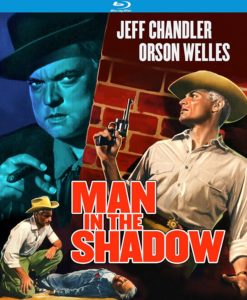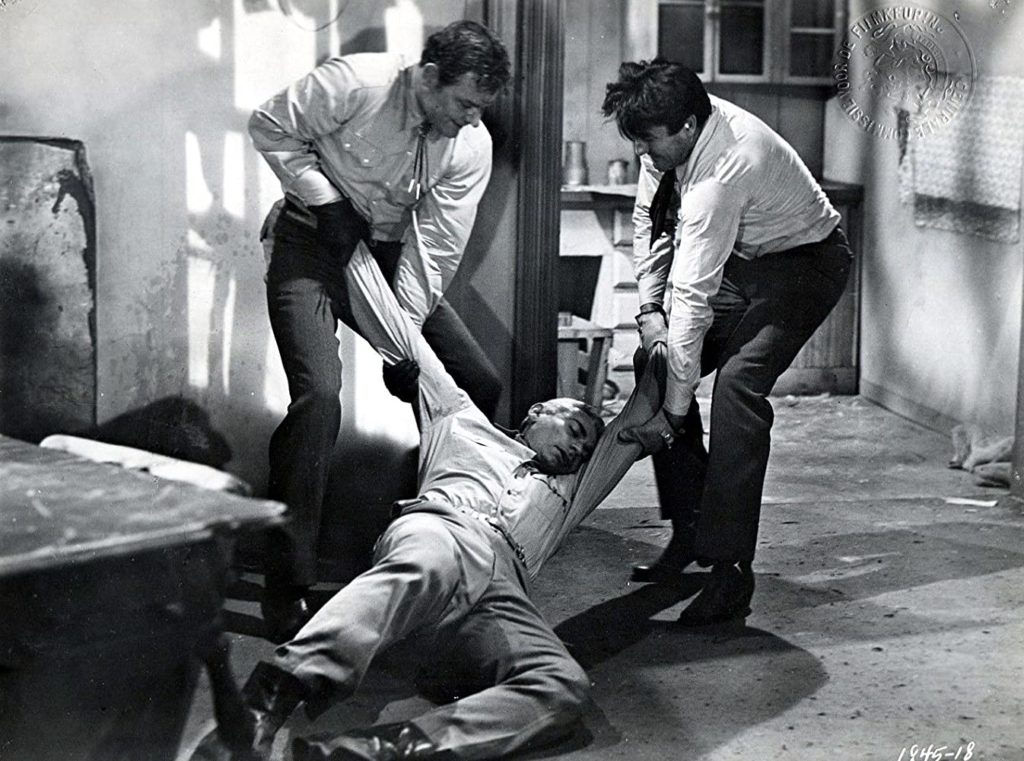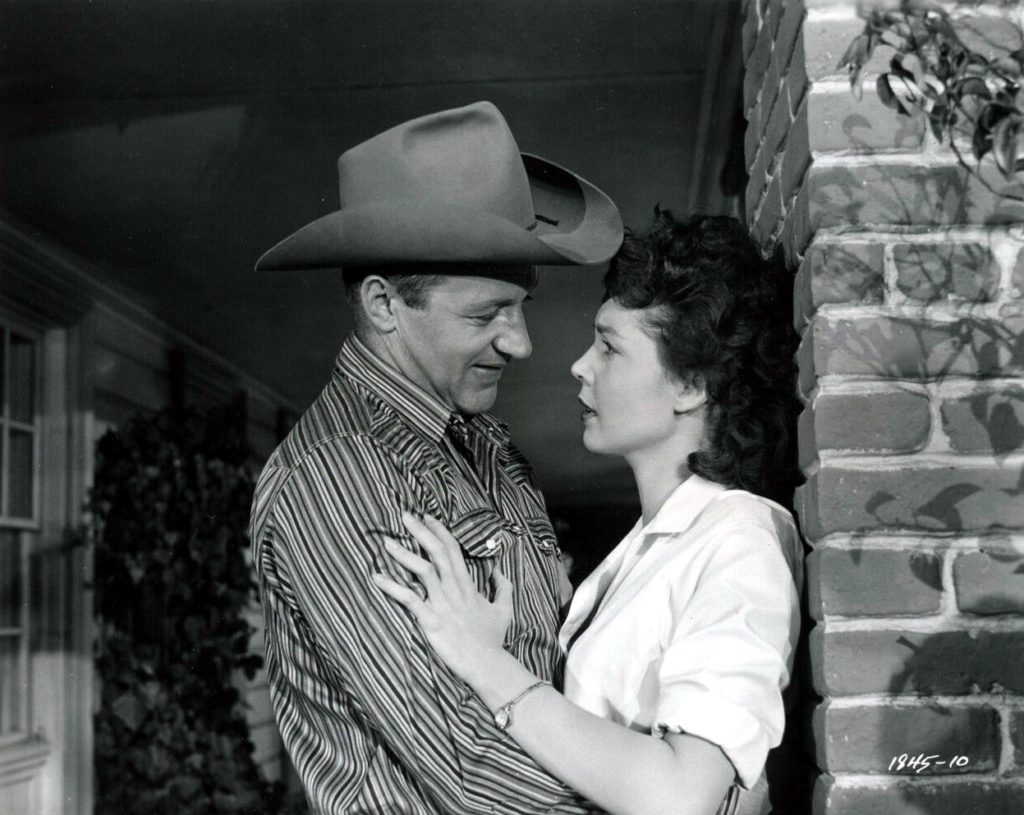Jeff Chandler Takes on Orson Welles in Jack Arnold’s Noir/Crime/Thriller/Western
DIRECTED BY JACK ARNOLD/1957
BLU-RAY STREET DATE: MARCH 17, 2020/KL STUDIO CLASSICS

Though 1957’s Man in the Shadow is inherently tricky to classify, a few things are immediately apparent.
First is that the film’s rugged leading man, the narrow-framed Jeff Chandler, is noticeably tall. At 6’4” with a cowboy hat and boots, standard doorways are clearly minor challenges. He even towers over his not-diminutive co-star, Orson Welles (himself a solid 6’). But that is neither here nor there in regard to which section to shelve the Blu-ray.
Then one may note the title’s semi-awkward use of “Shadow” as singular. It’s not grammatically incorrect, or even out of line with the story, as Chandler’s character Ben Sadler, a sheriff in a Texas town who finds himself in over his head, is indeed existing in the shadow of one very powerful man. That man is Virgil Renchler, as played with vile fragility by Welles. Renchler is the owner and proprietor of the Golden Empire, a massively sprawling cattle ranch that’s essentially maintained an ironclad economic grasp on the town for generations. When word of a brutal murder in the heart of the Golden Empire compound reaches Sadler, his investigation takes him into a darkness heretofore left unchallenged. Renchler and his henchmen don’t take well to Sadler’s persistence.
Which leads us back to the question of how to classify Man in the Shadow. Though it’s Texas cattle ranch trapping might suggest that it’s a Western, not to mention its compare/contrastability to the 1952 Gary Cooper starrer High Noon, calendars on numerous walls loudly indicate that it is August 1956. That makes it a thoroughly modern-day crime thriller that happens to exist in a Western-esque setting, not unlike Hell or High Water of a few years ago. But then, one must also take into account the physical presence of shadow throughout the picture. The many evocatively realized night-for-night scenes in Man the Shadow render it not out of place on a shelf labeled “Film Noir”.

Making the mix all the more interesting is the film’s director, Jack Arnold. Arnold is perhaps the foremost creature-feature director of the 1950s, and by extension, one of the filmmakers who helped make 50s cinema so interesting. Though no stranger to non-monstrous genres, Arnold by this time had made his greatest and most long-lasting mark with It Came from Outer Space (1953), Tarantula (1955), The Creature from the Black Lagoon (1954), and his masterpiece, The Incredible Shrinking Man (1957). It could be postulated that Man in the Shadow, what with its obvious low budget (don’t look for any actual cattle on that sprawling ranch), falls in line with what would be the beginning of a career decline that the filmmaker would not come back from.
Nevertheless, Man in the Shadow is indicative of key talent making the most of the limitations of their production. Yes, the first half of the film is too talky and to interior bound. And yes, the scope of the film lacks a grandiosity that would’ve elevated it. Yet, as the stakes raise and the question of just how corrupt this whole town actually is boils to the surface, the movie opens up. Suddenly we have Sadler the lone martyr, being publicly beaten and tortured before a populace content to look the other way in favor of their own financial solvency. (If the Golden Empire were brought down, there goes the primary support structure).

But the law if the law, by gum. Without it, we’d be free to be ransacking hooligans. Welles as the big cheese Renchler is solid in the part, even as not particularly is not asked of him. The trouble in the film arises when a young Mexican farm hand that he requested “be taught a lesson” for seeing his grown daughter (Colleen Miller) is accidentally killed. Thus begins a cover-up steeped in greed and racism. It is, unfortunately, the same kind of greed and racism that is still rampant when it comes to Mexicans in the U.S. This, coupled with Arnold’s no-nonsense tone, render Man the the Shadow as a film that has aged particularly well.
Film historian Troy Howarth gives a dense but pleasantly enthusiastic commentary, informing about the production, its key players, and colorful supporting cast (including Barbara Lawrence, Royal Dano, Martin Garralaga, Ben Alexander, and more). With only an 80-minute running time to work with, he’s racing to include as many facts and informed opinions as possible. It can become a bit dizzying, but if you pay attention, you can track along just fine. The film, shot in CinemaScope for Universal International, looks splendid on this new Kino Lorber Studio Classics Blu-ray edition. The high definition format works wonders with the many deep pools of black it wallows in. Or more accurately, the singular large shadow it exists within.


